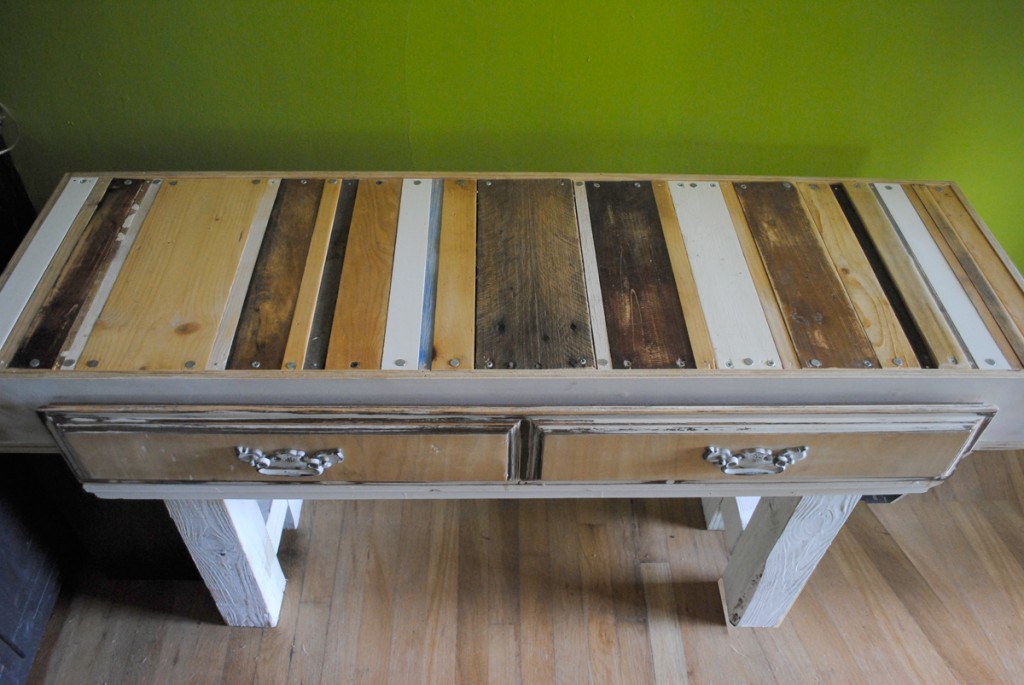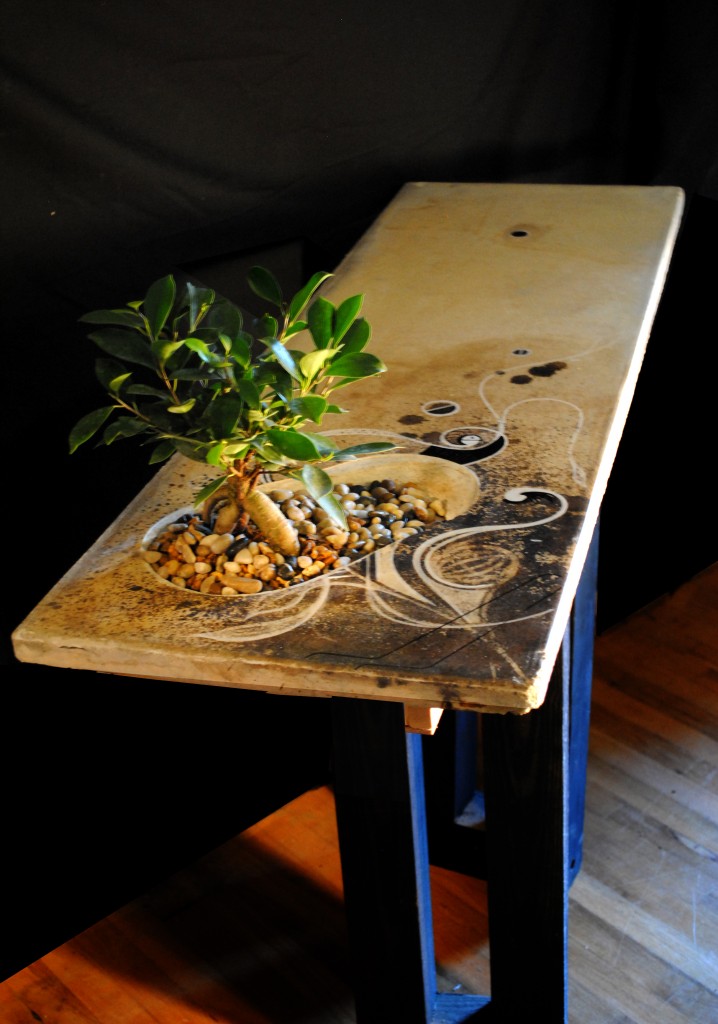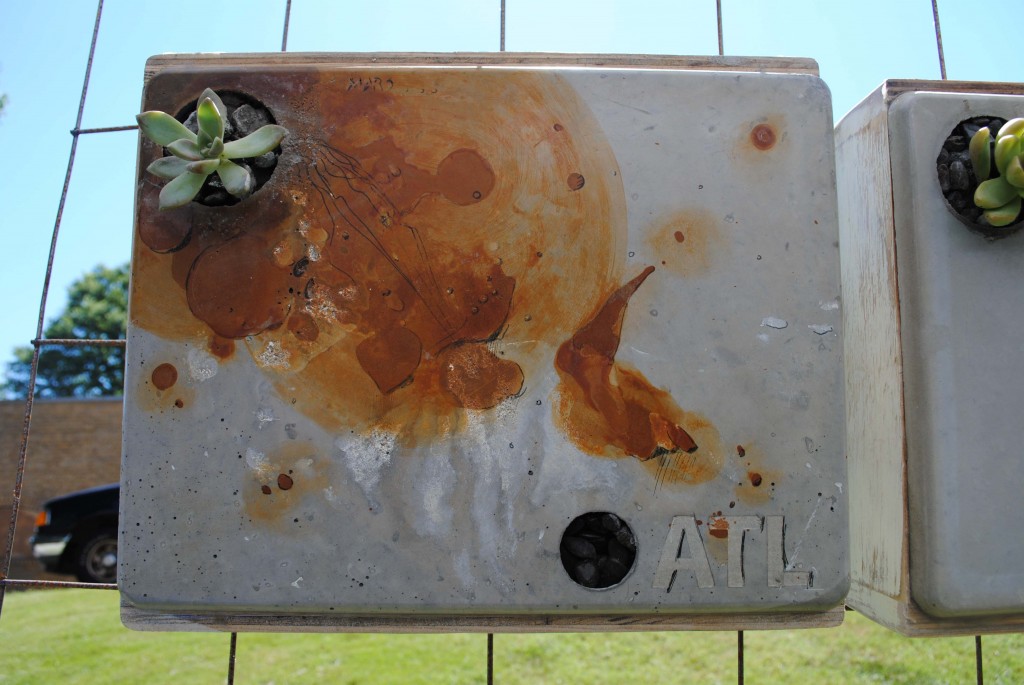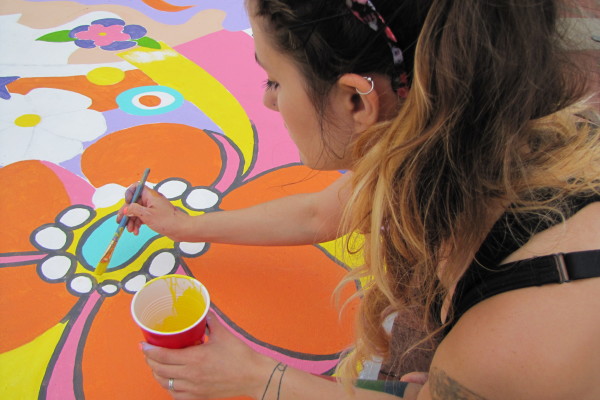 Wanting to go back to his roots, Mike Carpenter left his 9-to-5 job in the multimedia industry for a hammer. He went after his own passion of carpentry and design, trained through an apprenticeship and started MDC Interiors, a local modular furniture company. Now, Carpenter (he lucked out with that last name, didn’t he?) is a Georgia Tech Industrial Design student while running his small business.
Wanting to go back to his roots, Mike Carpenter left his 9-to-5 job in the multimedia industry for a hammer. He went after his own passion of carpentry and design, trained through an apprenticeship and started MDC Interiors, a local modular furniture company. Now, Carpenter (he lucked out with that last name, didn’t he?) is a Georgia Tech Industrial Design student while running his small business.
As a kid, his father and grandfather took him to their wood workshop, and his mother was a painter—creativity is in his blood. Through his work, he has combined functionality and modern angles with a little touch of nature (see: his reclaimed coffee tables). As his business grew, he introduced another one of his passions into his business: biking. His popular concrete bike coasters keep in mind portability and sport a minimal design.
Here, CommonCreativ talks to Carpenter about design, how Atlanta and the biking community have evolved in the past few years and advice on following your passion.
 CommonCreativ: How did MDC interiors get started? Is it a family trade?
CommonCreativ: How did MDC interiors get started? Is it a family trade?
Mike Carpenter: I initially started my business after being disgruntled by a few of the positions I had in the multimedia industry post-undergrad. My undergraduate education is in computer art (with a focus on animation) and, after working with a few CD-ROM development contracts over a span of 2 years, I realized my creativity was being stifled and I didn’t necessarily enjoy sitting in a cubicle doing the daily grind. I decided I needed change and was yearning for some tangible, hands-on creative experience.
I’ve always painted and enjoyed carpentry as a creative outlet, and I wanted to find a profession that would allow me to apply my creativity and skills within a lucrative profession. I worked and trained with a talented painter and furniture refinisher, and I realized I had a knack and interest in decorative painting. MDC Interiors was born shortly after, and I began to tackle jobs across the gamete from faux finishing, refinishing and building furniture, murals and cabinetry. I’m glad that I was able to get back to my roots and start working with my hands again.
CC: What are your favorite materials to work with?
MC: My favorite materials to work with have to be wood (particularly reclaimed) and concrete. Coalescing these materials into furniture creates a warm balance which, to me, is unmatched. The contrast of the warm wood and the cool concrete harmonized creates a simplistic yet elegant aesthetic. Reclaimed wood in particular provides a beauty that is hard to replicate—the nicks and the natural weathering make each piece unique and beautiful in their own way. But, I also like to constantly challenge myself to use and experiment with new materials to inspire creativity and gain personal growth.
 CC: Modular furniture and simple, industrial décor are big right now. Would you venture into that area soon?
CC: Modular furniture and simple, industrial décor are big right now. Would you venture into that area soon?
MC: I’m currently in an industrial design Masters program at Georgia Tech and am constantly hearing about and seeing great new innovative projects that are multi-functional. I would love to explore and create the modular aspect of furniture and products. Striving to be a consciously responsible consumer and designer, I love the fact that you can use one item for multiple functions—saving space, energy and money. At the same time, I think it’s imperative to maximize function while retaining aesthetic form and style.
CC: A lot of your pieces incorporate planters into the design. What can plants bring into décor?
MC: To me, combining natural elements with furniture is not only aesthetically pleasing, but also brings a sense of calm and tranquility to a room and allows us to appreciate and incorporate nature and the environment into everyday activities.
CC: You mentioned that you love biking. What are your thoughts on the current state of transportation in Atlanta? How about the BeltLine?
MC: I think Atlanta has come a long way in the last five years. Each year, more and more bike routes seems to pop up, and organizations like the Atlanta Bicycle Coalition are on the front lines advocating for bike-friendly legislation and changes in the city infrastructure. They have really helped shape the city’s thinking. I’m also really excited about the construction and beautification of the BeltLine and the bike routes that will be created between neighborhoods.
That being said, I think Atlanta still has a long way to go in order to catch up with cities like Chicago, New York and even Portland. One day we’ll get there. One step at a time, right?
CC: Where do you find your inspiration?
MC: Everywhere. I know that’s a broad statement, but it’s true. I have a connection with the materials I work with. I often draw inspiration from music, conversations, interactions, movies, and even the occasional nightmare. I find inspiration in the natural curves, shapes and colors that exist within nature.
I also find reading about other artists inspires me and helps me relate to others who face internal and external struggles, as well as those who experience growth and success doing something that they love.
 CC: What are your favorite Atlanta projects? Any specific artists you like to follow?
CC: What are your favorite Atlanta projects? Any specific artists you like to follow?
MC: I do enjoy watching the new mural projects popping up all over town; I love how artwork is connecting the city and creating dialogues between people about its place, intent and meaning. It also brings life into what were colorless areas of town. Evereman recently came to Tech to do a project with some of the students, and I find his message and artwork very inspirational.
CC: Where can people find your work?
MC: As of now, the full range of furniture and concrete products can be found on my website and Etsy shop. Locally, they can also be found at The Re-Inspiration store in the Virginia-Highland, Charis Books & More in Little 5 Points, and they’ll soon be at At the Collective in Inman Park.
CC: As a small business owner and jack-of-all-trades, do you have any advice to artists trying to follow their passion?
MC: This would go for anyone in any trade: Follow what you’re passionate about and commit. Truly believe in what you’re offering to the community. For artists, there’s a level of compromise at times when trying to make a living because, unfortunately, making art is not always a financially viable occupation. But, I’ve found that if you can find a way to merge a passion with a need, you can make it work.





